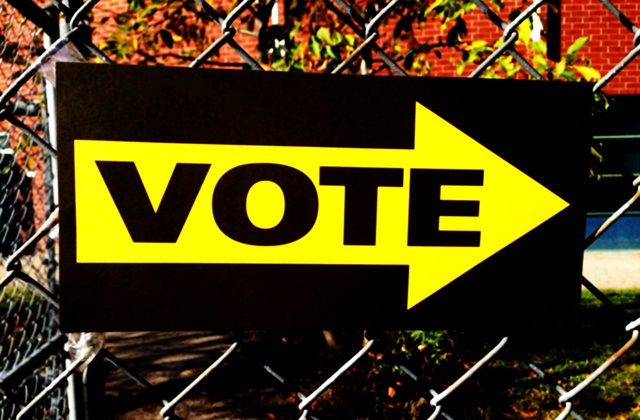Voting in the Australian federal election in 2016 came and went, without a definitive result delivered either way, because vote counting continued well beyond the Saturday night.
Then it stopped, before resuming again later.
By the own admission of the Australian Electoral Commission (AEC), it could take up to a month to fully count all of the votes.
Which, in this day and age, tends to beg the question:
Isn’t it about time voting occurred electronically and online?
Naturally there are objections to this, including:
Not everyone has internet access or access to such devices; where this is often particularly true amongst some demographics, such as the elderly, those living in remote areas, and amongst the impoverished.
Online voting opens up concerns about privacy and the risks of hacking.
Unless people are formally required to physically attend a designated venue such as polling places to vote, voter numbers may dwindle.
Whilst not invalid, such objects can be readily addressed and countered.
Moving to electronic and online voting could occur in combination with both individuals voting online and designated voting venues remaining, but with these physical locations being phased out and reduced in number over time.
Postal votes could continue to address issues of remoteness and lack internet access.
However, is a postal vote really any more secure and tamper-proof than online voting could be?
In an age where shopping, banking, and even government services (such as vehicle registration) all readily and regularly occur securely online, clinging to only allowing paper and postal votes seems a rather baseless appeal to tradition.
Notions of privacy and preserving the integrity of voting seem rather minor objections to online voting. Especially when the reality of voting in Australia seldom requires more than a verbal confirmation to a volunteer that you are someone on the electoral roll amongst the list of names and addresses they are looking at, and that you haven’t already voted in the current election. Online voting could tighten the integrity of identification and voting, or it could keep with a similarly lax approach based on the present honour system.
Online voting could occur over a period of a week (or similar, as currently already occurs with early voting), with the last day to vote coinciding with the option to alternatively vote in person at a more formal voting venue.
It may be an aside, but if people truly do not want to vote, then perhaps voting should not be compulsory either?
That being said, consider that online and electronic voting could have as legitimate options:
- The choice of making an informal vote without definition.
- The choice to vote for none of the candidates as an alternative informal vote.
Although this may offend the sensibilities of some, it would provide real information and data to politicians, political parties, government agencies, and others involved in the voting and democratic process, to genuinely gauge voter engagement or apathy. Rather than the present attempts at inference, based on voter swings and concentration or dispersion, and counting the number of informal votes.
Making it more convenient and relevant for people to vote, such as using online methods, may actually increase voter participation and voter engagement.
Furthermore, consider with online and electronic voting how much paper could be saved. By going paperless, this would include not only the ballot papers themselves, but all the associated how-to-vote printed paraphernalia which gets foisted onto people as they approach the voting locations. Though all these papers should be recycled, reducing the amount being made in the first place would be better for the environment.
Also regarding the environment, online voting should also reduce the amount of fossil fuels used as considerably less people would need to travel to vote.
Additionally, there’s also the human requirement and human capital. Volunteers could spend their time elsewhere, engaging in other community projects they considered worthwhile if so desired.
There is also the issue of counting the votes.
If voting were to occur online and electronically, thanks to the power of computerisation, the results of an election could be known almost instantly once polling places were closed and voting had formally ended.
It should also reduce human errors, such as mistakes made in counting and ballot papers being misplaced.
Additionally, were online voting to exist and people used it instead of postal votes, all of these would-be postal votes could be counted near instantly instead of on a delayed basis.
Another beneficial aspect of using computers to count the votes, including the assignment of preferences beyond the primary first preference vote, is that where preferences actually go would need to be wholly and fully disclosed for the purposes of programming. This would be required to account for the process of redistributing votes according to preferences, until one candidate receives at least 50 percent of the vote for an electoral seat and is elected to the House of Representatives, as well as the more complicated counting system used for voting in the Senate in federal elections.
The upside to this, is because politicians and political parties would need to declare this expressly beforehand, voters could look online and see exactly where the preferences go, rather than making inferences based on things such as political party how-to-vote cards.
This is far more transparent and ultimately makes for a more informed democratic process than the current wheeling and dealing that goes on behind closed doors regarding who gets what preferences by the political parties.
Another potential benefit of online voting, would be that unlike to the current lottery system of assigning positions for candidates on the ballot papers, which in any one election may bias results for a candidate or political party due to them luckily being in the first and therefore most prominent position (or otherwise), positions in online ballot papers could be randomised each time. Because each individual electronic ballot paper would display the candidates in randomised order, every candidate would receive an equally probable and unbiased chance of gaining a favourable position each time, in each instance of someone voting online. In aggregate favouring no-one, as opposed to the luck of the draw determining positions on all the physical ballot papers for a given election.
None of this is to suggest that the transition to online and electronic voting would necessarily be seamless. There are bound to be teething problems. However, were things to go offline, having the redundancy of still being able to vote on traditional physical ballot papers, would help in the early stages of rolling out online and electronic voting.
It should be tested on a small scale initially, with redundancies in place to prevent disruption should something go wrong. Then learn from this experience, and improve things in future iterations.
Similarly, it would also require consulting with the voting public to help develop user-friendly interfaces for the online ballot papers. This would need to include methods for voters to correct their mistakes when voting, and allowing for the ability to make informal votes as discussed above.
Where people weren’t voting online directly with their own devices, it would need to be determined what method of devices and interfaces would be used at the formal polling places. Such that what was used, was truly more efficient and environmentally friendly than the current physical pencil and paper method of voting. Which although simple, does undeniably work and serves its intended purpose.
Yet the possibilities are there.
The technology already exists.
Were online and electronic voting already here, the true and full outcome of the 2016 Australian federal election would already be known by now.
If you’ve got an opinion about this, submit your vote online by answering the uthinki question below.
It’s undeniably electronic.
As is the ability to make comments and offer suggestions about the pros and cons of online versus paper voting methods.
 uthinki Considered Opinion?
uthinki Considered Opinion?



